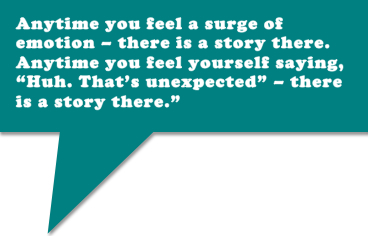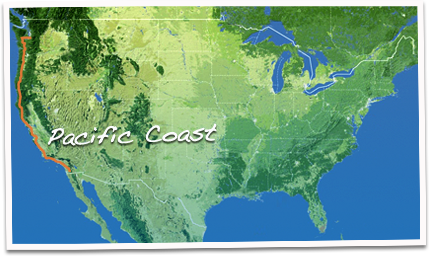
I believe Kindra Hall sought me out on Twitter or Facebook (or both). As I learned more about her, I was utterly charmed by this lovely young woman and her entertaining newly designed site/blog Kindra Hall Tells All. I’m thrilled to present this Q&A with Kindra over the next five days.
Bio: [In her own words from her site, Kindra Hall Tells All] I grew up in small-town Minnesota. I graduated high school in 1999, college in 2003, and finished graduate school (completing a thesis on the use of storytelling in organizations) in 2005. I now live in Phoenix after experiencing enough snow and below zero temps to last a lifetime.
When I was in fifth grade, my teacher Mrs. Sprain did a storytelling lesson in her reading class. This experience set the rest of my life in motion. Throughout high school I competed on the speech team as a top storyteller and went on to tell nationally at the National Storytelling Network annual conferences and at the National Storytelling Festival in Jonesborough, TN; in 1999 as a youth teller, and in 2008 at the Exchange Place. It was at these events and through these experiences that my natural passion for the art of a good story found some direction.
However, as much as I love telling for a live audience, I had more stories to tell than I had venues to tell them in. After moving to Phoenix (but before I had friends) I sat in my apartment and started posting stories online (on MySpace of all places) for others to read. I didn’t know I would love writing as much as I did, and I didn’t expect to love hearing people’s responses as much as I do. I now post these stories here — at least once a week. As this site has grown, I have had the honor of working with other people and their stories so that the world will know them better — just as you will know me more by reading the stories I have shared. Read more here
Q&A with Kindra Hall, Question 1:
Q: You are unusual in that you are both an oral-performance storyteller and a writer of stories. To what extent is there a difference in your approach to writing a story (writing for the eye) and preparing one for oral performance (writing for the ear)? I’ve had some discussion on my blog about the best way to deliver oral storytelling — especially in, say, a podcast, where you might be able to get away with reading the story instead of just telling it. Is it best to write nothing down and just deliver the oral story from memory, or should you use bare-bones notes, or what? Bottom line, what’s the relationship between the orally delivered story and the written one?
A: This is a conundrum I have only recently come to terms with.
I started writing my stories mainly because I had more stories to tell than I had places to tell them. I started seeing stories everywhere I went, recalling stories from years ago, and if I had waited until I was standing on a stage to share them, I fear I would have exploded. I know there is a lot more to say about whether a written story is considered “real storytelling,” but that conversation can happen another time.
Here is my perspective on the relationship between the orally delivered story and the written one. The No. 1 challenge for someone who is telling a story orally that they have already written: It is easy to become more focused on the WORDS — less focused on the STORY.
By nature, when you write a story, you spend a certain amount of time going back and getting the words just right. They need to flow, they need to express emotion, and the words carry the full weight of transferring the meaning of the story to the listener. You choose these words carefully. Fortunately, you have time to make these edits. You are in the comfort of your own home.
When a teller steps on stage, or even into a sound studio, the priorities change. Now it’s not the words that are responsible — it is YOU, the storyteller. You don’t have time to meticulously edit every word, nor should you be trying to recall them verbatim as these things disconnect you from your audience. The most powerful thing about oral storytelling is, when done right, the story is co-created with the audience. If you’re too busy trying to remember what you are “supposed” to say, the audience can’t participate and the story will fall flat.
I had to learn this the hard way. Trust me, it was painful.
My advice is this: When you wish to tell a story you have written, read over it again. Once, maybe twice. While you read, be aware of the timeline — what happens when, A, B, C, D, The End. Second, instead of focusing on specific phrases or wording, focus on the emotions they convey. Consider the emotional journey you want your audience to take, instead of what words you want them to hear. Finally, put the written copy away and don’t look at it again until it’s all over.
Here’s the thing. Sure, there may be times when the words you used on paper sounded better than the ones you told on stage. However, the interaction, the spontaneity, the co-creation that comes from saying the words that happen to come out, far outshines the alternative. Your audience will get more from the telling, and the story itself (if I may take a moment to personify it) will be happy to have been given life instead of just recited.
Even with Podcasts — I feel the audience knows when you’re not being real. Use this same strategy. Leave the notes at home. Remember the timeline and the emotional journey you want your audience to take.
I’ve upped it to twice in week, though I’d like it to be even more. The problem is, I’m not always “feeling it.” However, I believe that that is an artist’s cop-out. I heard an interview with multi-Grammy winner David Foster who attributes much of his success as a musical genius to the fact that he works on the days he “doesn’t feel like it.” Sure, he may not produce a Grammy winner on those days, but he’s improving his craft and honing his discipline. These are important characteristics for storytellers to have as well.










